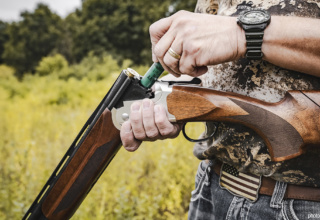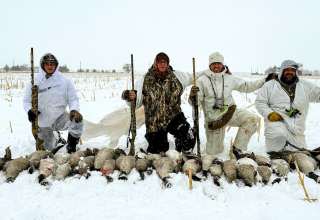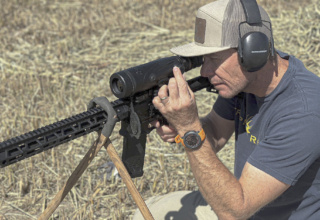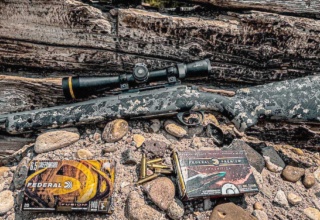A top-notch waterfowl wrecker in a gauge that’s easy on the shoulder and still provides plenty of lethality, Browning’s A5 Sweet Sixteen is a win
by Jace Bauserman
Ducks and geese were my love and, to an extent, still are. Had it not been for my early waterfowling forays, I’m not sure I’d be as immersed in hunting as I am now, and for that, I’m eternally grateful.
Today, with my children huddled in layouts right next to me, few things still make the tiny hairs on my neck spring to life like a group of cupped-up greenheads or a flock of feet-down Canada geese.
The shotgun in my hands makes it a little sweeter, too. After putting my Remington 870 to rest after 20 years of no-fail use, I switched to Browning’s legendary A5. What a shooter. I love the humpback receiver, and the weight and feel of the gun are second to none. It swings remarkably well and recoil, even with heavy 3 1/2-inch goose wreckers, is minor, and it’s a double- and triple-killing machine.

I was, of course, pumped when Browning’s new-for-2022 A5 Wicked Wing Sweet Sixteen arrived at my FFL. The only downside was duck and goose seasons were over, but that didn’t stop me from putting this 28-inch barrel (26-inch available) shooter through the paces.
Why A 16?
Before we jump into some of my initial impressions and testing data, let me answer the question that many of my waterfowling compadres have been asking me as of late: Why take a 16-gauge to the duck blind or goose pit?
The 16 may be the best gauge for waterfowl ever created — less recoil than 12 and more pellets than a 20 — but it was cut short in its infancy. This was mainly due to the gauge not being recognized for use in skeet competitions during the 1920s. Ammo makers couldn’t justify the cost, and just like that, the 16 lost traction, but it’s making a remarkable comeback.

First Impressions
The A5 Wicked Wing Sweet Sixteen is a beauty, and before I even handled the gun, I was struck with an overwhelming sense of nostalgia. My love affair with my A5 12-gauge is no secret, and this new shooter instantly gave me the warm fuzzies.
The Mossy Oak Blades Camo on the composite stock and forearm looks excellent, and the Burnt Bronze Cerakote (on the tested model) finishes on most metal parts gave this shooter a racy appeal that few will ignore.
In true Browning fashion, there were no nicks, dings, or scratches, and I appreciated the oversized (shaped like a shotshell head) Briley bolt release, which will be easily accessible when Mother Nature is being nasty, and my hands are covered in bulky gloves. The action is butter, and the Cerakote-covered lever is curled and showcases a textured gridded pattern that ups dexterity.

The real magic happened when I shouldered the gun. The composite stock with close radius pistol grip fitted with textured gripping surfaces felt great in hand, and my cheek welded to the stock. The forearm is slim and features the same textured gripping surfaces as the stock, which I cheered, and the shotgun, at a mere 6.96 pounds, feels ultra-balanced.
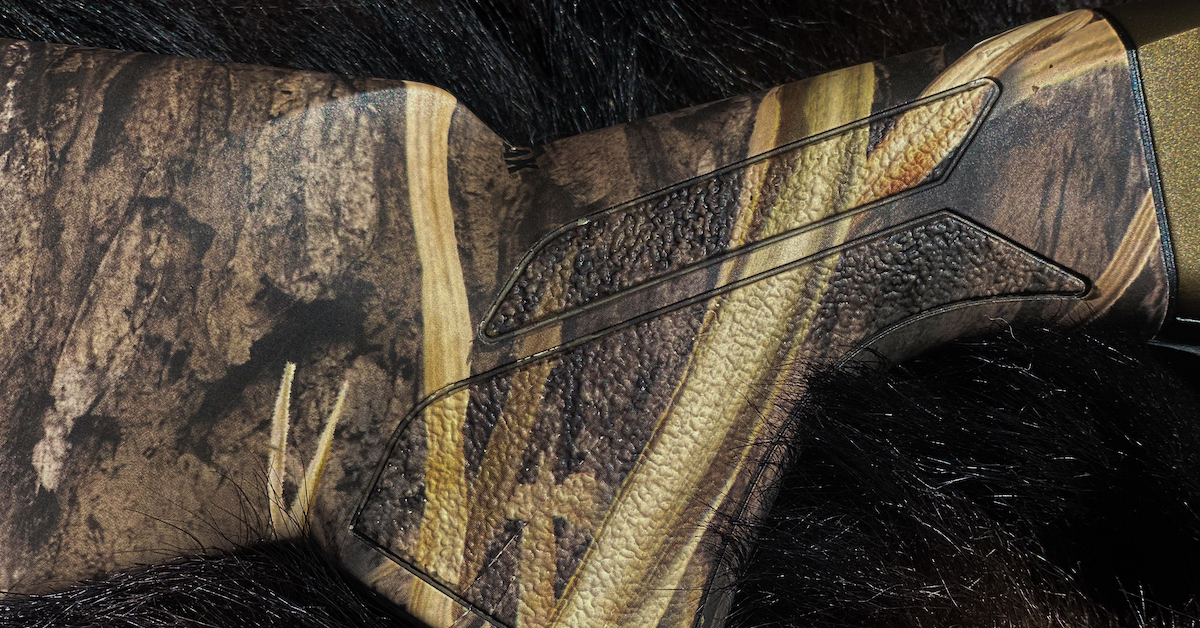
The cheek-to-stock-to-humpback receiver alignment was all too familiar, and the barrel is fitted with a pair of sighting devices — an ivory mid-bead sight and red front fiber-optic. The push-button safety, though not huge, sits outside the trigger guard, above and behind the trigger. Black is cold, and red is hot; you know the drill. The Sweet Sixteen is fitted for a sling, and two attachment points are found — one at the stock’s backend and the other on the forend cap. Browning provides a trio of extended Invector-DS Goose Band Choke tubes to add a flare and distinguish this shooter as a certified waterfowl killer.

Time to Test
Browning includes 1/4- and 1/2-inch stock spacers for length of pull adjustment, but the shotgun’s 47 5/8-inch overall length felt just right, and I was ready to go boom.
The Sweet Sixteen accepts 2 3/4-inch 16-gauge loads, and I appreciated the audible click each shotshell produced when slid into the chamber. My choke of choice was the Invector-DS Goose Band Modified, as my plan for this shooter is ducks and geese over decoys. My first shot was off-hand, coming out of a layout and firing at a 35-yard target. The balance and feel of the shotgun are remarkable. Browning slugs it as Ergo Balance. All I can tell you is you need to shoot this shotgun to appreciate how well it feels once shouldered.
After putting a few patterns on paper at different ranges, it was time to bust a few clays. The lightweight nature of the shotgun blended with Browning’s Kinetic Drive System will lead to lots of doubles and triples. Felt recoil is nil, and I chalk this up to the Kinetic Drive System and Inflex Recoil Pad, which uses directional deflection to send the comb down and away from the face. I can testify that when the gun went off, there was little movement, and after busting a single clay, I could quickly swing to another.
As mentioned, the Kinetic Drive System is another recoil robber. The system is designed to harness recoil energy and convert that energy into mechanical motion, making the action come to life. I put 250 rounds through the Sweet Sixteen over three days, and not once did I experience any issues. When the trigger is pulled and the primer punched, gases are sent out the barrel and away from the action, ensuring ultra-clean operation. Spent hulls get kicked a reasonable distance, which I appreciated.

Off-hand shooting from a layout and while standing is great, but I wanted to get a good feel for each choke’s pattern when shooting off sticks. I’m an Invector-DS fan and have been since their inception. I tested each at various ranges, and the modified and improved are what you’d expect. The full, though, was extra impressive. My 50-yard pattern shooting Hevi-Bismuth #4 was remarkable. Because I love to shoot, test, and tinker, I set another target at 60-yards and switched loads to Hevi-Shot’s #6. I was surprised at the pattern. If I’d been hunting turkey, an old tom would have died with this load/choke combo, using only the Sweet Sixteen’s ivory mid-bead sight and front fiber-optic sight.
The 16-gauge has been branded as the “Gentleman’s Gauge,” but I argue that it should be classified as the “all-around” gauge. During my three-day testing period, my 16-year-old son, 14-year-old-daughter, and wife all shot the gun. After shooting Browning’s A5 Sweet Sixteen from shooting sticks, from layouts, and at clay targets, they all asked me the same question: “Can I have it?”
Browning A5 Sweet Sixteen (as tested)
- Gauge: 16
- Chamber: 2 ¾ in.
- Barrel Length: 28 in. & 26 in.
- Length of Pull: 14 ¼ in.
- Drop at Heel: 2 in.
- Drop at Comb: 1 ¾ in.
- Magazine Capacity: 4 – 2 ¾ in. shotshells
- Chokes Included: Full, Mod., Imp. Cyl.
- Front Sight: fiber optic
- Barrel Material: steel
- Recoil Pad: Inflex 2, large
- Trigger Finish: gold-plated
- Overall Length: 47 5/8 in.
- Weight: 96 lbs.
- MSRP: $2,229.99


